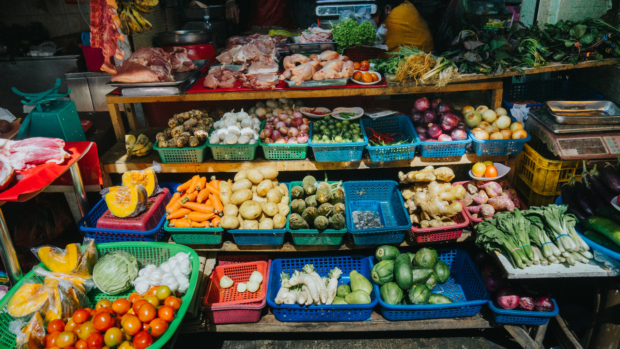Many Filipinos can’t afford healthy food
Many Filipinos can’t afford to buy and eat healthy food as these are expensive due to the lacking agricultural infrastructure in the country, the state-run think tank Philippine Institute for Development Studies (PIDS) said.
In a discussion paper titled “Is Food Supply Accessible, Affordable, and Stable? The State of Food Security in the Philippines,” supervising research specialist Ivory Myka Galang said that while hunger incidence in the Philippines was declining prepandemic, many Filipino children still suffered from malnutrition, while obesity was also prevalent among kids and adults.
Low diet quality
“In terms of diet quality, the average food intake of Filipinos is high in cereals and tubers, but low in fruits and vegetables. Despite being heavy on starchy food (such as rice), only 30 percent of Filipino households were able to meet the recommended level of energy in 2015,” the PIDS said.
It did not help that nutritious foods were not only expensive but also inaccessible.
“On food affordability, it was found that many Filipino households are unable to consume nutrient-adequate diets due to its unaffordability. The poorest households suffer from food insecurity the most as evidenced by their low diet quality and high incidence of malnutrition,” the PIDS said.
Article continues after this advertisementHigh transport costs
“On the physical accessibility of food, the country scores lower than its Asean (Association of Southeast Asian Nations) neighbors in terms of agricultural infrastructure [including logistics system]. Although the share of the population with electricity access increased from 65 percent in early 1990s to around 96 percent in 2019, some of our neighbors in Asean have almost a 100-percent access rate,” the PIDS added.
Article continues after this advertisementWhile the Duterte administration built about 3,000 kilometers of farm-to-market roads, the PIDS said “the backlog is 13,000 km, which was not attained due to the lack of financial resources.”
“High transport costs due to poor or inadequate transport and logistics infrastructure contribute to unaffordability of food, especially of raw produce, which adversely affects both rural and urban consumers,” the PIDS said.
RELATED STORY:
How to prepare your healthy meals and snacks in less than 15 minutes
